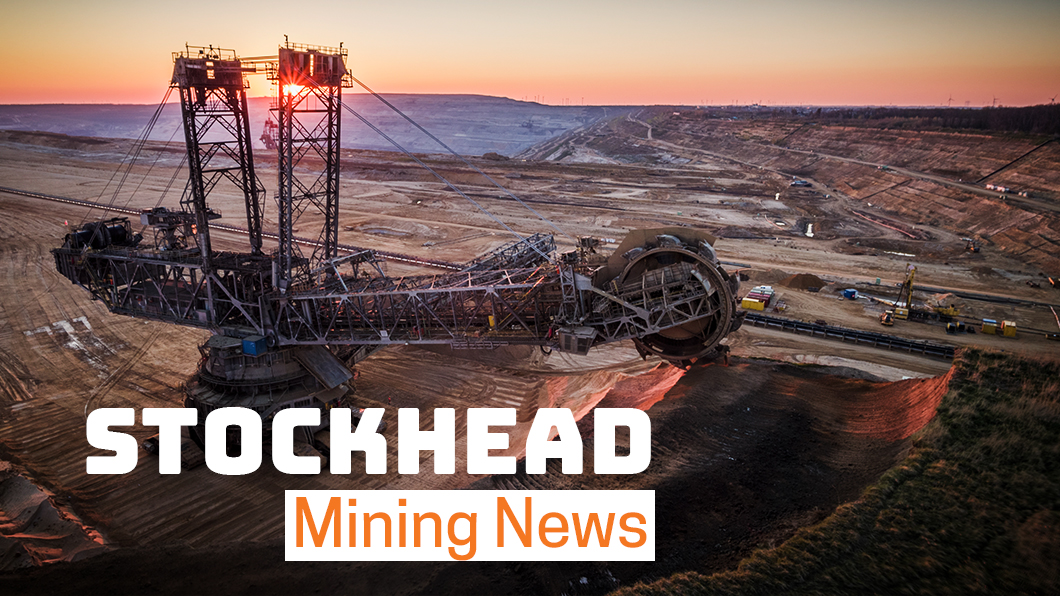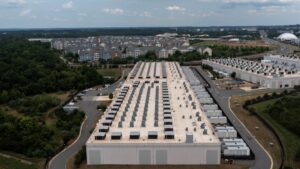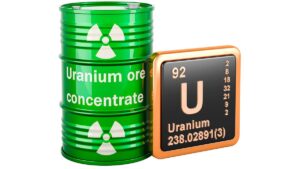As nickel prices surge, this junior’s mission is to find the next Nova

Pic: Schroptschop / E+ via Getty Images
- Desert Metals raised $2.7 million to back nickel-copper-PGE exploration at Narryer Terrane in WA’s Mid West
- Like Chalice’s world class Gonneville discovery Desert is searching for large ultramafic nickel discoveries on the western edge of the Yilgarn Craton
- Desert Metals MD Rob Stuart says the company was a first mover into the hot exploration thematic
Think Australian nickel and your mind immediately shifts to the 1960s, when Kambalda boomed and unwitting investors won and lost millions betting big on Poseidon Nickel.
For years the type of nickel deposit most associated with Australian nickel production was the high grade nickel locked up in Kambalda-style komatiites.
But with the discovery of Sirius Resources’s Nova nickel-copper mine in 2012, now being mined by IGO (ASX:IGO), a new style of nickel sulphide deposit has emerged.
More commonly found overseas in places like Russia’s Norilsk and Canada’s Voisey’s Bay domain, these deposits located in ultramafic intrusions tend to be lower grade but much larger.
In some instances, they reveal entire districts of nickel, copper and platinum group elements a company or industry can dine out on for decades.
Most recently identified in Chalice Mining’s (ASX:CHN) world class Gonneville discovery near Perth, many geologists have theorised those sorts of nickel sulphide discoveries could be plentiful along the western margin of the Yilgarn Craton.
One company wholly committed to that thesis is Desert Metals (ASX:DM1), which on Monday raised $2.7 million to advance its plans to drill its collection of nickel-copper-PGE targets northwest of Meekatharra in the Narryer Terrane.
Inspiration from abroad
Desert Metals managing director Rob Stuart is a geoscientist by training, whose impressive career in the resources industry included stints as a program manager for near mine exploration at BHP’s Nickel West division in WA and as a program manager of minerals exploration for BHP in Russia and Central Asia.
It was there he was first introduced to the massive nickel accumulations being mined by Norilsk Nickel, the largest producer of refined class 1 nickel metal in the world.
“That was when we were exploring for the komatiitic nickel,” he said.
“That stage was when the nickel price had skyrocketed, BHP had a large, probably $200 million, exploration program exploring up and down the Agnew-Wiluna (belt) – we had 20 drill rigs running at any one time. And there was a real focus in that time on nickel.
“At the same time BHP signed a joint venture with Norilsk Nickel to explore in Russia.
“While I was in Russia I was managing nickel projects as well as porphyry copper projects in Kazakhstan, seeing those gigantic deposits they have at Norilsk and understanding this was a very different style of deposit geologically than the ones that we’re exploring for in Western Australia.”
Stuart realised the craton margins where these monsters lay were largely unexplored in WA.
“That was probably the kernel of the idea that got Desert Metals started when I returned,” he said.
By that time Sirius had found the company-making Nova-Bollinger deposit under deep cover east of Kalgoorlie on the Fraser Range on the other side of the Yilgarn.
“That just added further weight to the idea these things really are there sitting, waiting to be discovered,” Stuart said.
First mover
These are now the main types of nickel deposits junior explorers are hoping to find.
While it’s several hundred kilometres to the south, $3 billion Chalice’s Gonneville discovery near Perth has placed a spotlight on the Yilgarn’s edge.
The media and investor attention certainly helped Desert when it went to raise the cash for its 2020 IPO.
But the reality was Stuart had already pegged the ground several years earlier.
In fact the area, including 9 Desert-owned exploration licences over 1600km2, was largely untouched until Chalice made its discovery in the Julimar region, prompting a pegging spree up and down the Yilgarn’s western margin.
“When we staked our ground in the Narryer we had no neighbours. We were staking greenfields starting 2017,” Stuart said.
“When I founded the company in 2018 Chalice had not made their Gonneville discovery and I was going around Perth looking for seed funding having to explain the deposit model.
“Chalice made that a little bit easier when they discovered Gonneville because then people were aware.
“After we then started shopping that around and got to IPO, Chalice swooped in behind us with a whole bunch of others and now you can’t get any ground up there at all.”
Magnetic highs
Desert has already hit volcanogenic massive sulphides at the Belele prospect in reverse circulation drilling this year, including a 52m zone of sulphides in hole BRC004 that included 44m at 0.14% copper and 0.43g/t silver from 140m deep.
“Belele is the one licence in our portfolio that is slightly different to our other exploration efforts in that we picked it up opportunistically because we knew we were going to be collecting airborne electromagnetic data at the time the helicopter was in the area,” Stuart said.
“We could see that there was an extension in gravity data.
“So we hypothesised that any conductors sitting within that belt would have potential for VMS style mineralisation or even orogenic gold.
“There was a decent strength conductor in there, we followed it up on the ground with ground EM. And we just recently this January put the first holes into it and we have indeed intersected VMS style mineralisation.”
It’s not ore grade yet, but Stuart believes the hits so far are just on the edge of the conductor and as drilling penetration increases, higher grade and wider intersections could be uncovered.
It plans to drill also at Innouendy, where aircore drilling has identified a large zone of mafic rocks adjacent to anomalous PGEs and historic nickel anomalism, and the Dingo Pass prospect, where strong conductors have been mapped beneath its mafic intrusions with coincident nickel, copper and PGE anomalism in soils on the craton margin.
“So at the moment at Belele we have intersected a style of mineralisation that we hypothesised was there and that’s what makes that exciting for the moment,” Stuart said.
“The rig will then move on to Dingo Pass where we have some fantastic, better than 10,000 Siemens conductors sitting in the right sort of rocks on the craton margin, just the sort of stuff that ticks all the boxes for large nickel-copper-PGE style mineralisation.”
Desert has one rig, with Stuart saying it is actively looking for a second to ramp up going into the peak winter drilling season.
Good time for a nickel find
Arguably there is no better time than now to make a big nickel discovery.
Prices briefly soared to US$100,000/t before the LME stopped trade earlier this month due to a controversial short squeeze.
But concerns about Russian nickel supply and the quicker than expected growth of demand for nickel from electric vehicle batteries has also driven an improvement in its fundamentals.
Nickel is back trading around US$32,000/t, having had its first relatively normal days of trade since the LME resumed buying and selling of nickel contracts with daily limits in place to control volatility.
“We’re certainly encouraged by seeing the nickel and copper prices rise because we feel that there’s some substance to that, there’s a long term economic reason as to why demand will be increasing,” Stuart said.
“We also know that the supply is relatively thin, there haven’t been huge deposits coming online recently that are going to meet that demand.
“The biggest demand for nickel at the moment and for the foreseeable future is stainless steel. However, the nickel that’s used in batteries is going to become a substantial part of the nickel market.
“So I feel very good about exploring for nickel at the moment, with a price that’s rising, and I think is going to be supported by the fundamentals for the next several decades.”
Desert Metals (ASX:DM1) share price today:
Related Topics
UNLOCK INSIGHTS
Discover the untold stories of emerging ASX stocks.
Daily news and expert analysis, it's free to subscribe.
By proceeding, you confirm you understand that we handle personal information in accordance with our Privacy Policy.








